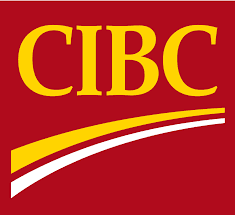Are you a global business owner? Here’s how to pay your overseas employees

The right payment solution depends on whether your highest priority is cost, speed or convenience.
More and more business owners are going global to meet their human resource needs. While this opens up the talent pool and potentially new customer bases, it raises some unique challenges — one of which is how to pay employees living outside of Canada.
We’ll break down your options for sending overseas payments to help you make the best choice for your business’s needs.
 This guide is sponsored by CIBC Global Money Transfers for Business. The best way to purchase products for import, pay international workers, or wire transfer money. Make cross-border money transfers or payments for your business. Learn more.
This guide is sponsored by CIBC Global Money Transfers for Business. The best way to purchase products for import, pay international workers, or wire transfer money. Make cross-border money transfers or payments for your business. Learn more.First things first: Get a good business bank account
Having strong banking support is critical when you’re trying to run a business — especially if you have to coordinate efforts across multiple countries.
All of Canada’s major banks offer business banking solutions, but not all are created equal. Growing organizations may need more and starting off with the right account will help enable the business to scale.
CIBC’s Global Money Transfer for Business program has zero fees and each transfer counts towards your account transaction limit, after which fees apply. It also allows you to send to over 120 countries in as little as one day with preferred exchange rates, making it easier to conduct business and remunerate foreign employees than many other options out there.
Evaluate your business’s needs
There are a number of ways to send money overseas. The right option for you depends on several factors:
- How often you make overseas payments. The more often you send money, the more transfer fees you’ll pay. Find a business banking plan that offers access to low-fee online money transfer services, or find a transfer service provider that offers a rewards program or discounts for frequent transactions.
- The size of your overseas payments. If you need to make sizable international transfers to many people, look for a transfer method with flat-rate fees to save money. Percentage-based fees could be preferable if you send small amounts.
- Preferred sending and receiving options. If you want to fund overseas payments in cash, you need a bank or other service provider that has physical locations nearby. Not all transfer methods support payment by credit card. Receiving income by direct deposit is convenient, but not all transfer methods support this.
Select an appropriate overseas payment method
Some money transfer methods don’t allow you to send payments internationally. However, the following methods are available:
Bank wire transfer.
Wire transfers are a secure, long-established way of sending money around the world. The downside is that wire transfers can take 2-5 business days to process and often cost more than modern transfer methods like using an online transfer service provider.
Some Canadian banks have developed competitive, digital in-house transfer options. With CIBC’s Global Money Transfer for Business program, customers can send payments of any size to over 120 destination countries with no transaction fees. Plus, they get one day delivery service and preferred foreign exchange rates to help with their business costs.
Pros:
- Good for large payments with flexible deadlines
- Safe and reliable
- Offered by most banks so it can streamline transactions using your existing account
Cons:
- Hidden fees may apply
- Potential for long wait times
- Requires bank accounts to send and receive funds
International money transfer service provider.
Some dedicated money transfer companies like MoneyGram and Western Union have physical locations where you can pay in cash. Other companies have no physical branches and only accept electronic forms of payment, though these often come with low fees and fast transfers.
International money transfer service providers are a good alternative to banks for businesses looking to make simple overseas payments.
Pros:
- Competitive fees
- Fast transfers
- Convenient online transfer options
Cons:
- Some transfer service providers don’t have physical branches for in-person transactions
- If you send through a dedicated money transfer service, you can’t bundle transfers costs, banking services and business tools for a discount. (However, sending through a bank may allow you avoid this drawback.)
Outsource overseas payments to a PEO.
If you don’t want to handle the details of overseas employment regulations and accounting paperwork, consider using a professional employer organization (PEO), sometimes called an employer of record (EOR).
These companies legally become the employer of your international workforce but allow you to retain total managerial control. PEOs know about international laws and taxes and can take the hassle out of paying employees overseas — for a fee, of course.
Pros:
- You don’t have to worry about employment regulations in other countries
- Many PEOs offer tax preparation services
- More time and energy to spend on other parts of your business
Cons:
- Costs money to have a third party manage your international payroll
- Not all business owners feel comfortable being legally distanced from their overseas workforce
- Less control over the processes used to pay your employees
Cross-border banking options (for paying US employees).
Given Canada’s relationship with its southern neighbour, most major banks offer specially-tailored banking solutions that make it easy to send money to the US. With these solutions, you get competitive exchange rates and little or no fees when transferring funds between Canadian dollar accounts and US dollar accounts.
For example, the CIBC U.S. Dollar Current Account costs just $6 a month and allows business owners to transact money in US funds for a small fee per transaction.
Pros:
- Transfer CAD to USD quickly and easily
- Enjoy preferred exchange rates
Cons:
- Not offered by all financial institutions
- May come with a non-waivable monthly fee and transaction fees
- Funding Canadian transactions through a US dollar account will result in foreign transaction fees
Send your overseas payment
Once you’ve selected the right transfer method, the process of sending money is fairly straightforward:
- Step 1: Create an account with your bank or transfer service provider. If you want to use a bank, you may need to open a business chequing or savings account. To open an account, you’ll likely need to provide your SIN, proof of Canadian residency, proof of business ownership and personal ID such as a driver’s license or passport.
- Step 2: Login to your account or visit a local branch. Bank transfers can usually be conducted by logging into online banking or visiting your local bank branch. Some transfer service providers operate solely online.
- Step 3: Provide information on the type of payment you want to make. Indicate the amount, sending currency, receiving currency, and the way your recipient will receive the funds (i.e. direct deposit to his or her bank account, cash at a local affiliate branch etc.)
- Step 4: Provide details on the sender and receiver. You’ll need to provide your name, address, phone number and personal ID (if it’s not saved in the system) as well as your recipient’s name, address and phone number. For large transfers, you may be asked to provide additional information on who you are, where you work and how much you earn. This is reported to Canadian authorities to prevent fraud.
- Step 5: Confirm the details of your transfer. Double check to make sure all the details are correct. Once you submit the transfer, you may not be able to cancel it and get a refund should you make a mistake, so this step is very important.
- Step 6: Pay for the transfer, and finalize the transaction. Make sure you know ahead of time what payment methods are acceptable and what the fee will be. Once the payment is submitted, the transaction will begin processing. Some companies will issue a confirmation number, which you will need to give your recipient, so they can confirm the transfer on their end and receive the funds.
Bottom line
Sending overseas payments to your employees can be complicated. But, thankfully, there are a number of options available to you. Consider whether you most value low fees, speedy transfers or flexibility, then narrow down your choices to find the right international payment method for your business.

